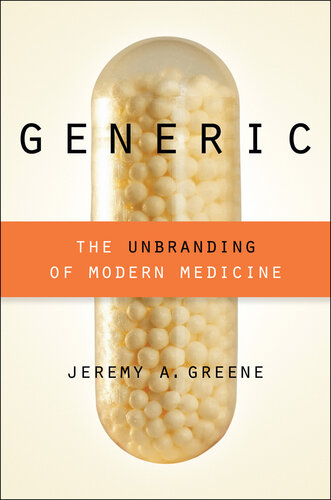
Generic
The Unbranding of Modern Medicine
- اطلاعات
- نقد و بررسی
- دیدگاه کاربران
نقد و بررسی

August 11, 2014
Greene (Prescribed: Writing, Filling, Using, and Abusing the Prescription in Modern America) turns the concept of generic as “ho-hum” on its head with this jam-packed survey of the effects culture, medicine, and politics have exerted on today’s ubiquitous generic drugs for the last 50 years. Painstakingly documented and researched, Greene, an associate professor of medicine at Johns Hopkins School of Medicine, infuses plenty of drama into the tale of American consumers’s shift from suspicion to support for drugs that are “the same but not the same” as brand-name medicines. From black-market medicines controlled by the mafia to the risk-taking pioneers of “generic enterprise” to the intense resistance of pharmaceutical producers—and doctors—to the rise of consumer rights and a patient’s “right to know what he is buying and how much it costs,” Greene laces this history with intrigue, ambiguity, and scandal. Students of the history of medicine will be intrigued, but his message is farther-reaching. In coming to grips with the future of our health care, the past, Greene writes, “helps to orient us to the present,” and the concept of “same but not the same” can also help us better understand biomedical innovation as well as the “risks and rewards of debranding.”

October 15, 2014
Greene (history of medicine, Johns Hopkins Univ.; Prescribing by the Numbers) reviews how the generic drug industry came into being in the United States, with some information about the development of generic drugs in India and Brazil, and how governmental regulation has affected the development of generic pharmaceuticals. As with many aspects of modern society, the part played by generic products has been driven by economics. Greene carefully details how various interests, traditional drug developers, generic drug companies, insurance companies, consumers, and doctors have shifted the role of generic medicines in society. It is important to know that these drugs are only similar to, not identical to, their brand-name components, a factor that adds significantly to the difficulty of regulation and oversight. The author also describes the emerging role of "me too" drugs, created when multiple manufacturers produce similarly purposed medicine to gain market share. VERDICT This is an excellent and recommended history of how the generic drug market came to be, but it is missing information about the current situation, which may be better addressed in Greene's previous work.--Eric D. Albright, Tufts Univ. Lib., Boston
Copyright 2014 Library Journal, LLC Used with permission.




دیدگاه کاربران